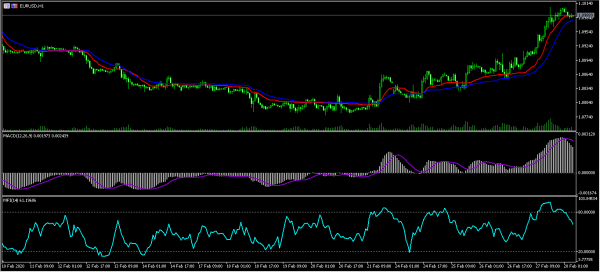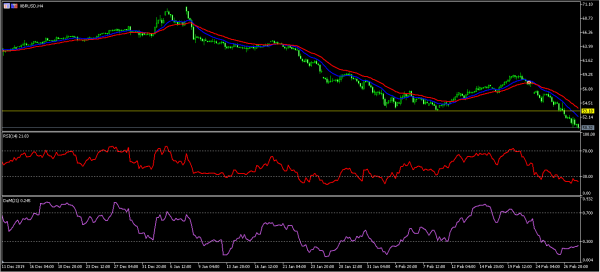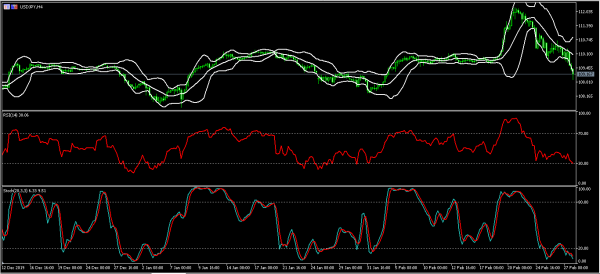Global stocks continued tanking as fears of COVID-19 continued to rise. In the United States, the Dow declined by more than 1,100 points. It has fallen by more than 3,000 this week alone. The same trend continued in Asia, where the Nikkei dropped by more than 4% and A50 dropped by more than 2.50%. In Australia, the ASX dropped by more than 3.0%. This correction is happening because the disease, which started in China has been spreading internationally. In South Korea, more than 2,000 people have been infected. Traders are also concerned about the Democratic primaries, where Bernie Sanders is the frontrunner.
The Japanese yen rose sharply while stocks declined. Coronavirus is the biggest reason for this price action. Earlier today, we received a number of important data from the country. In January, the job/applications ratio dropped to 1.49 from the previous 1.57. This was the lowest level since April 2017. The unemployment rate rose to 2.4%, which is the highest it has been since October last year. In February, the core CPI rose by 0.5% after rising by 0.7% in the previous month. The headline CPI rose by 0.4%, which was below the expected 0.8%. The preliminary industrial production for January rose by 0.8% after rising by 1.2% in December. Retail sales declined by-0.4% in January. The Japanese economy is at a crossroad because it was already contracting before coronavirus became a big story. Also, the BOJ has little it can do because interest rates are at historic lows.
We will receive a number of important data from Europe, Canada, and the United States. We will receive the nationwide house price index from the UK. The index is expected to rise by 2.3% in February. We will also receive the January import price index and unemployment rate from Germany. In North America, we will receive the GDP, RMPI, and IPPI data from Germany. Most importantly, we will receive the personal income and spending data from the United States.
Most market participants are hoping that central banks will intervene probably by cutting rates. However, this could be unwarranted because of the crisis at hand. The biggest challenge is that productivity of Chinese manufacturers has dropped as most workers stay at home. Also, travel to and from China has reduced and the service sector has almost halted in places. Reports are that most malls are almost vacant. Therefore, a rate cut would not be enough because it will not reopen factories in China.
USD/JPY
The USD/JPY pair dropped to an intraday low of 108.90. This was the lowest level since February 5. The price is along the lower line of the Bollinger Bands. The RSI has moved to the oversold level of 30. The signal and main line of the Stochastic Oscillator has moved to the oversold level. The pair may continue falling as participants move to safe-havens.
EUR/USD
The EUR/USD pair eased slightly from yesterday’s high of 1.0007 to a low of 1.0981. The price is slightly above the 28-day Adaptive Moving Average (AMA) and along the 14-day AMA. The signal and histogram of the MACD have started moving downwards. The money flow index indicator has also moved from the overbought to the current level of 60. The pair may still resume moving upwards depending on data from Europe.
XBR/USD
The XBR/USD pair declined to a fresh low of 50.25. This is the lowest it has been since December 12 2018. It is almost 30% below this year’s high of 70.72. The price is below all the moving averages. The RSI has moved to the oversold level of 21. The DeMarker indicator has also moved to the oversold level. Still, there is a possibility that the pair will move below the important support of 50.00.













